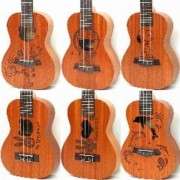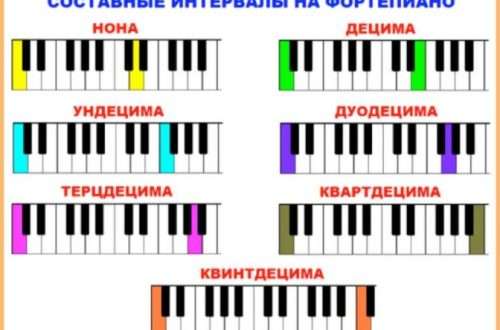Types of chords
Chords can be divided into groups according to different criteria. By the number of steps included in their sound composition, by the way they sound (soft or sharp). The presence of the tritone interval in the consonance is responsible for the sharpness of the sound. There are also chords with and without add-ons. Next, let’s go through each group a little.
First, let’s talk about which chords can be distinguished by the number of steps they consist of. Chords are usually built in thirds. If we take the notes of the scale one after another (these will be thirds), then we will get different chords. The minimum possible chord is a triad (three notes of the scale taken one after another). Next we get a seventh chord (a chord consisting of four sounds). It is called a seventh chord because the extreme sounds in it form a seventh interval. Next, we continue to add one note at a time and we get, respectively: non-chord, undecimal chord, tercidecimal chord.
There are some options for building large chords. The G9 chord, for example, has five notes, but sometimes we just want to add a 9th to the triad. In this case, if any lower sounds are skipped, the chord will be designated as add9. That is, the notation Gadd9 will mean that you need to take the G major triad and add the 9th degree to it. The seventh stage in this case will be absent.
Chords can also be divided into major, minor, dominant, diminished and semi-diminished. The last three chords listed can be used interchangeably, as they can have almost the same sound composition and tritone interval that requires resolution.
It’s good to move through a dominant seventh chord and a diminished one into another key. In addition, the half-diminished is often used in conjunction with the dominant in a minor key.
It turns out that major and minor chords are soft in sound and do not require resolution, the rest are tense.
Chords can also be divided into diatonic and altered. Diatonic chords can be constructed in a major or minor scale that is not modified by alteration. Altered chords are obtained when certain degrees in some diatonic chords are raised or lowered in accordance with the rules of alteration.
Thus, by using alteration, we can get chords that seem not to belong to the current key at all. For example, in the key of C major you may end up with a diminished D sharp chord.



